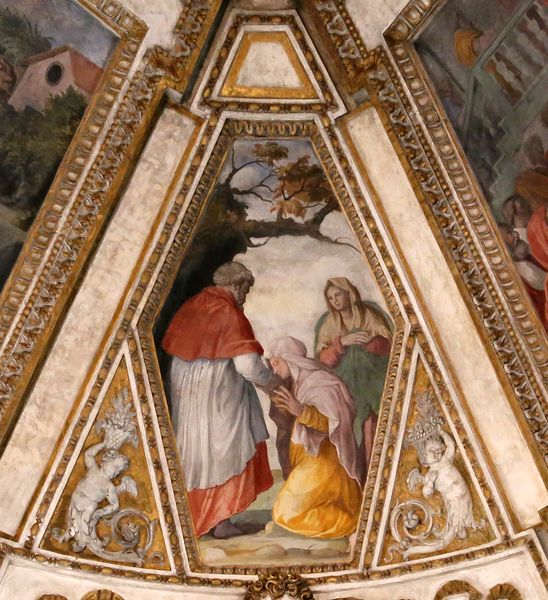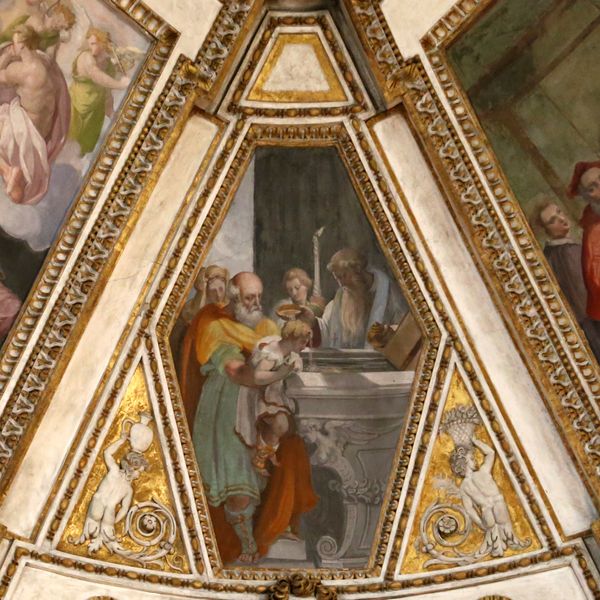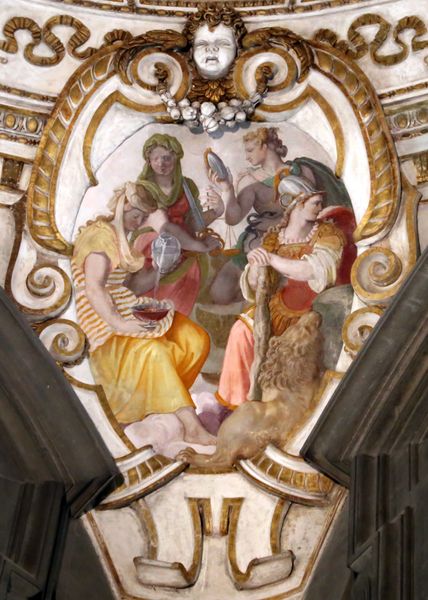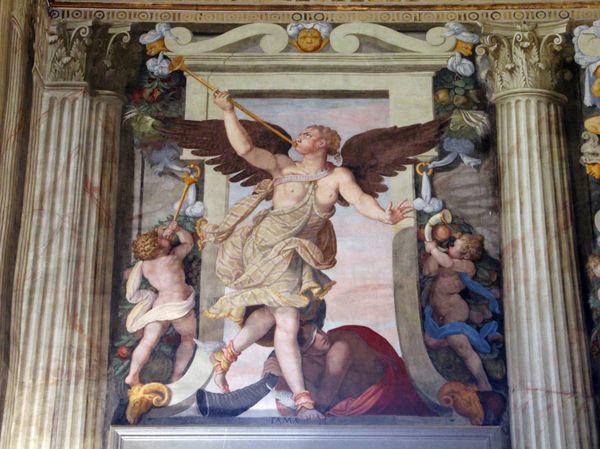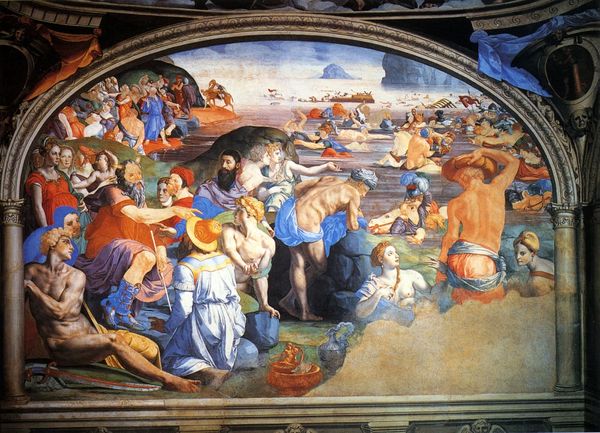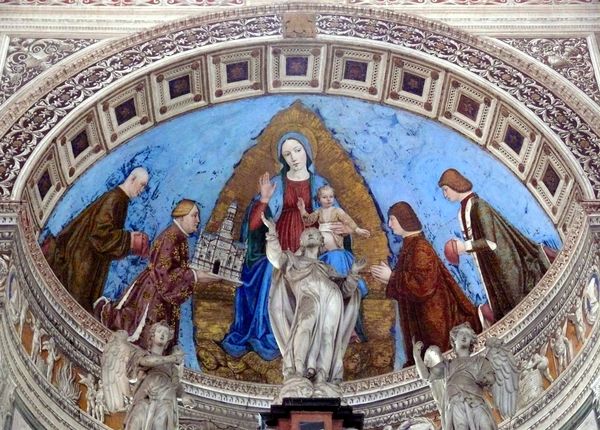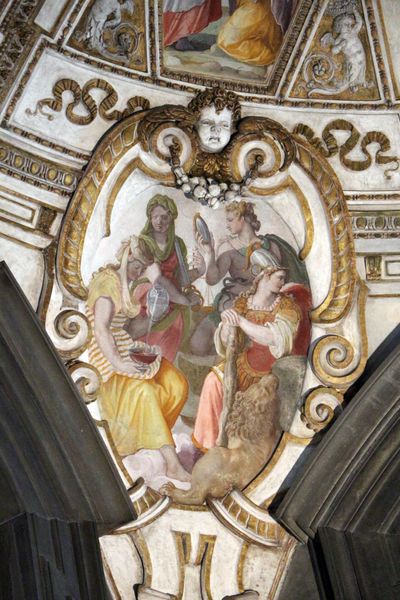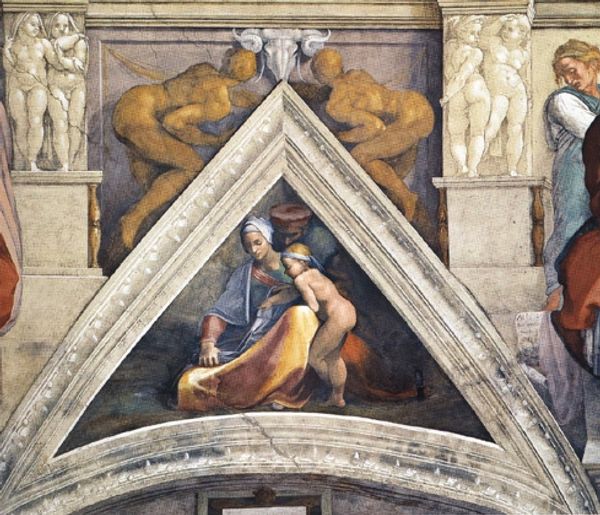
tempera, painting
#
portrait
#
tempera
#
painting
#
sculpture
#
mannerism
#
figuration
#
historic architecture
#
genre-painting
#
history-painting
#
italian-renaissance
#
historical building
#
statue
Copyright: Public domain
Editor: This is Alessandro Allori's "Stories of St. Jerome," a tempera painting from 1577 in Santa Maria Novella. It has such a fascinating, contained feel to it. I am really struck by how intimate it feels given it's a depiction of an important historical event. What's your take? Curator: Well, what immediately grabs me is the performative aspect of history presented here. Allori isn't just illustrating a scene; he's crafting an image of institutional power. Notice how St. Jerome, likely a portrait of someone influential, is at the painting’s center, surrounded and attended by various figures. Editor: You think he's actually depicting someone contemporary to the artwork? Curator: Very possibly! That wasn't unusual during the Renaissance. And look at the architecture itself – is Allori referencing actual buildings, or creating an ideal of a seat of power and religious significance? How do you think its placement within Santa Maria Novella affects its interpretation? Editor: Interesting question. Knowing it’s in a church adds a layer of religious context, but it also might comment on the Church's political role during the Renaissance. Curator: Exactly! Allori uses a style often described as Mannerism. Do you think this is the peak of Mannerism's cultural influence, or perhaps does this appear at a time when its innovations are being subsumed? Consider how the artificiality and exaggeration of form might have played in Florence's political climate, so soon after the High Renaissance. Editor: I never thought about connecting style and politics so directly, but it makes perfect sense. Now I see this as less about St. Jerome as an individual and more about how power is constructed and visualized. Thank you for expanding my understanding of the piece and that era. Curator: Likewise! Exploring those connections can really deepen our engagement with Renaissance art.
Comments
No comments
Be the first to comment and join the conversation on the ultimate creative platform.

